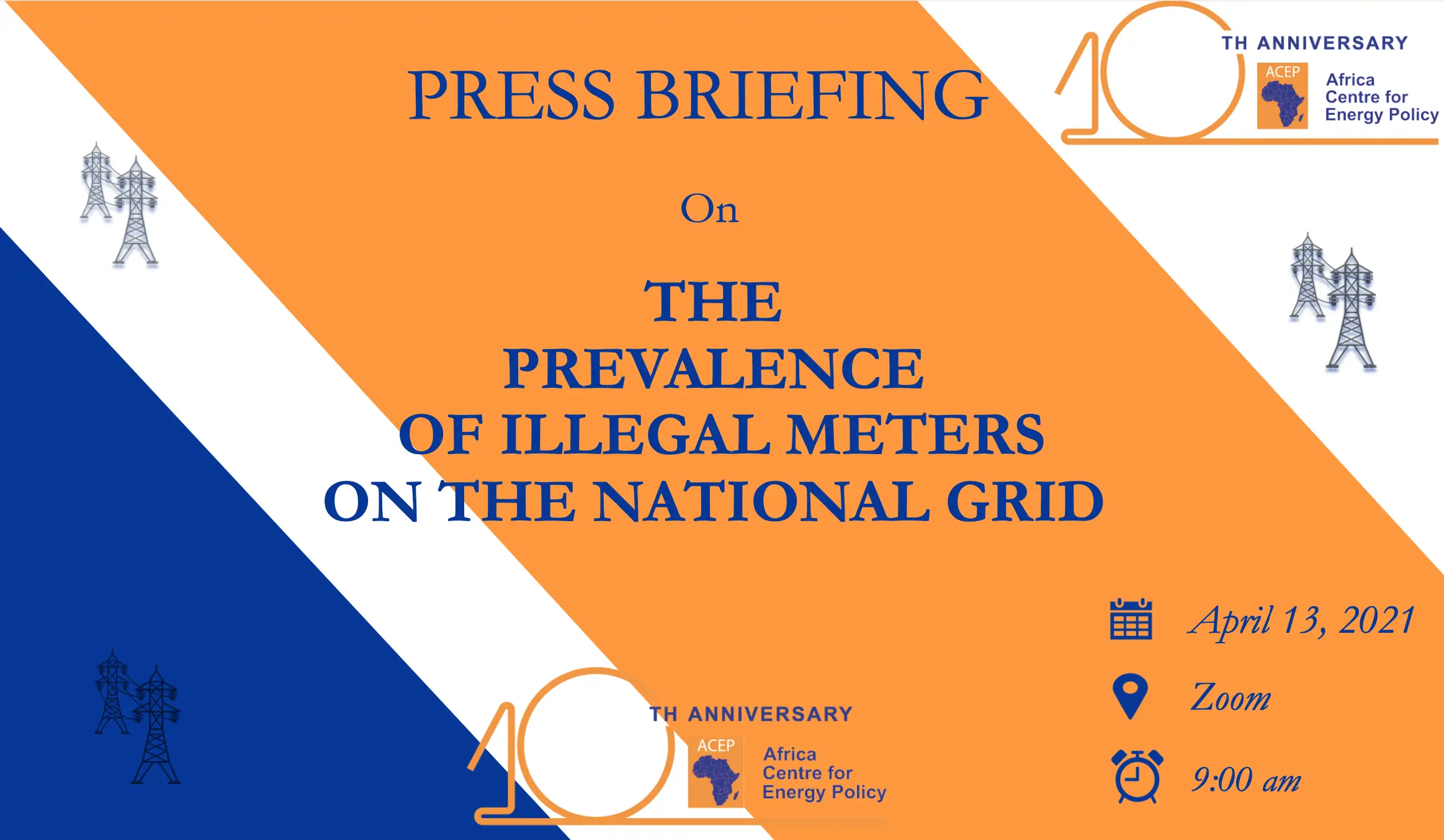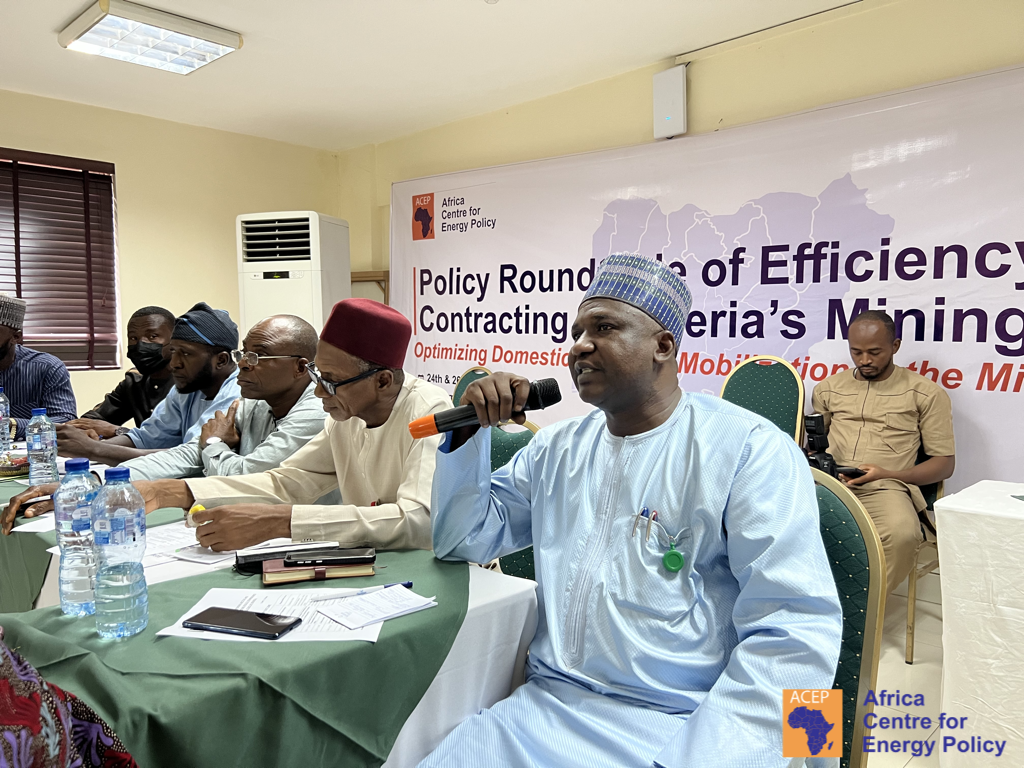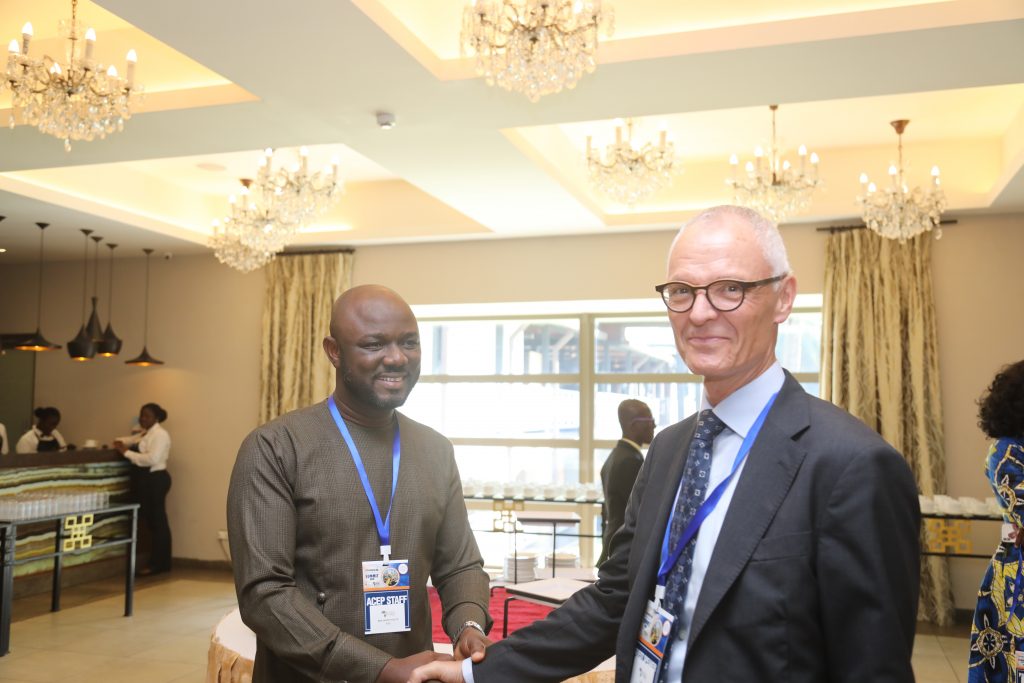
Press Briefing On The Prevalence Of Illegal Meters On The National Grid
Background
The government of Ghana instituted the National Electrification Scheme (NES) in 1989 as its principal policy for driving electricity access across the country for economic growth and development. The NES is operationalised through the National Electrification Master Plan and targeted universal electricity access by 2020. The current electricity access rate of 85.17 percent show that while progress toward universal access has been substantial, it has fallen short of the 2020 target. Consequently, the timeline for achieving universal electricity access has been shifted to 2025.
One of the vehicles for delivering the NES policy is the Self-Help Electrification Program (SHEP), a community-driven electrification mechanism. Under the SHEP, communities are assisted by the government to advance their connection to the national electricity grid ahead of their scheduled connection time under the National Electrification Master Plan. The program has been delivered in phases starting in 1990 and is currently in its fifth phase. SHEP has contributed to increasing the electricity access rate from about 23 percent in 1990 to 85.17 percent in 2021.
SHEP requires communities to be within 20km of an existing 33kV or 11kV supply, be prepared to purchase all Low Voltage (LV) poles to connected and have a minimum number of houses wired up and ready to receive electricity to be considered eligible for the program. While SHEP has been relatively successful in contributing to a growing electricity access rate, the program’s fundamental challenge has been the inability of communities to procure the required number of LV poles and ensure the minimum number of houses are wired for connection. As a result, the meters for SHEP find their way outside the designated areas for SHEP implementation. The incidence of the SHEP meters being used outside its designated locations has resulted in the increasing trend of illegal connections to the grid, especially in urban residential areas. In a revenue protection exercise conducted by ECG in between December 2019 and January 2020, a total of 10,142 illegal SHEP metres were recovered in the Ashanti Region.
With the active involvement of agents of the distribution companies, people procure the SHEP meters outside the ECG system, mainly to be used in urban areas and connect them to the grid. These meters are considered illegal as they have not been processed to enable standardised readings, billing, etc., and their consumption is not captured in the grid system leading to commercial losses to the distributor. Some persons, have in the past, been arrested for the sale and installation of illegal meters. ECG has also revealed that politicians distribute these unregistered and uncalibrated metres in the rural areas for electoral benefits.
Non-payment for power consumed and power theft through illegal connections are the principal causes of the commercial losses witnessed in the power distribution sector. Ghana is estimated to have lost 21.7 percent of gross electricity generated annually between 2006 and 2016 through transmission and distribution losses. The upward trend of losses from the system has continued till date. As of September 2019, system losses were 24.5 percent. This is made up of 10.5 percent technical losses and 14 percent commercial losses. Again, electricity distribution losses for the first quarter of 2020 was 26.63 percent, which is about 3.43 percent higher than the regulatory benchmark of 23.2 percent. Technical losses accounted for about 10 percent whilst commercial loss was 16.63 percent.
These losses indicated above have significant impact on the financial health of the distribution utilities. ECG reports estimated annual losses from power theft to be about US$418.2 million. Pre-paid meters were introduced to reduce and eliminate illegal connections and theft due to in-built regulation and monitoring systems. Yet, power theft through illegal connections remains a menace. This indicates that the assumptions that informed the mass deployment of prepaid meters have failed to be the silver bullet for fixing the commercial losses.
The increasing commercial losses significantly contributes to the continuous debt accumulation in the sector in spite of the efforts made to clear the energy sector debts under ESLA. The inefficiencies in the distribution of power informed government’s decision to use the second compact of the Millennium Challenge Compact (MCC) for the financial and operational turnaround of ECG through Private Sector Participation (PSP). Unfortunately, the PSP process was truncated due to the several actions and inactions of actors in the process. As a result, the problems in the distribution sector continue to persist with its attendant debt accumulation. In fact, the government’s Energy Sector Recovery Program reports that if left unresolved, the continuous debt accumulation in the sector could reach US$12.5million by 2023.
Objectives of Study
From the foregoing, ACEP sought to verify the existence of these illegal SHEP meters to provide empirical evidence on the problem and to raise awareness and inform policy decisions for the reform of the power distribution system.
This Press Briefing, held on April 13, 2021, was aimed at updating the general public on the findings from the above study which investigated the Prevalence of Illegal Meters on the National Grid.










